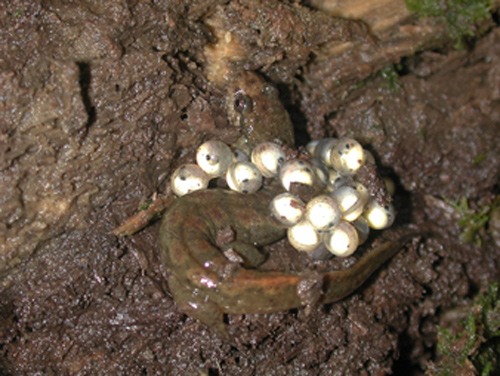The northern dusky salamander is a member of the lungless salamander family. Adult salamanders in this family do not have lungs but take in oxygen through their skin. Northern dusky salamanders are smooth-skinned and brown with a darker stripe on their back and a dark line from the eye to the mouth. They may have light speckiling on their sides. Their hind legs are rather muscular and they can jump. There is a dorsal fin on their tail. They can be 3 to 5 inches long.
The range of the northern dusky salamander is a band in the US from Maine to Louisiana. They are not in Florida and are only in the western edges of Georgia and the Carolinas. Northern dusky salamanders have no protected status in Connecticut.
Adult northern dusky salamanders live in or near clear streams or shallow rivers. They are often under flat rocks in such waters. Adults hibernate over the winter and can use aquatic or semi-aquatic spots. They may overwinter in deeper water under submerged rocks or logs.
Eggs are laid in mid to late summer near water but not in it. Eggs are usually under rocks near water's edge.
The larvae will stay on land for a short time after hatching before taking to the water in a stream. They resemble adults but have feathery gills. They can be speckeled. The metamorphosis into the adult stage can happen by the next spring or it may take a few years. Larvae can overwinter in deeper water.
Adult norhtern dusky salamanders eat insects and invertebrates, as do their larvae.
